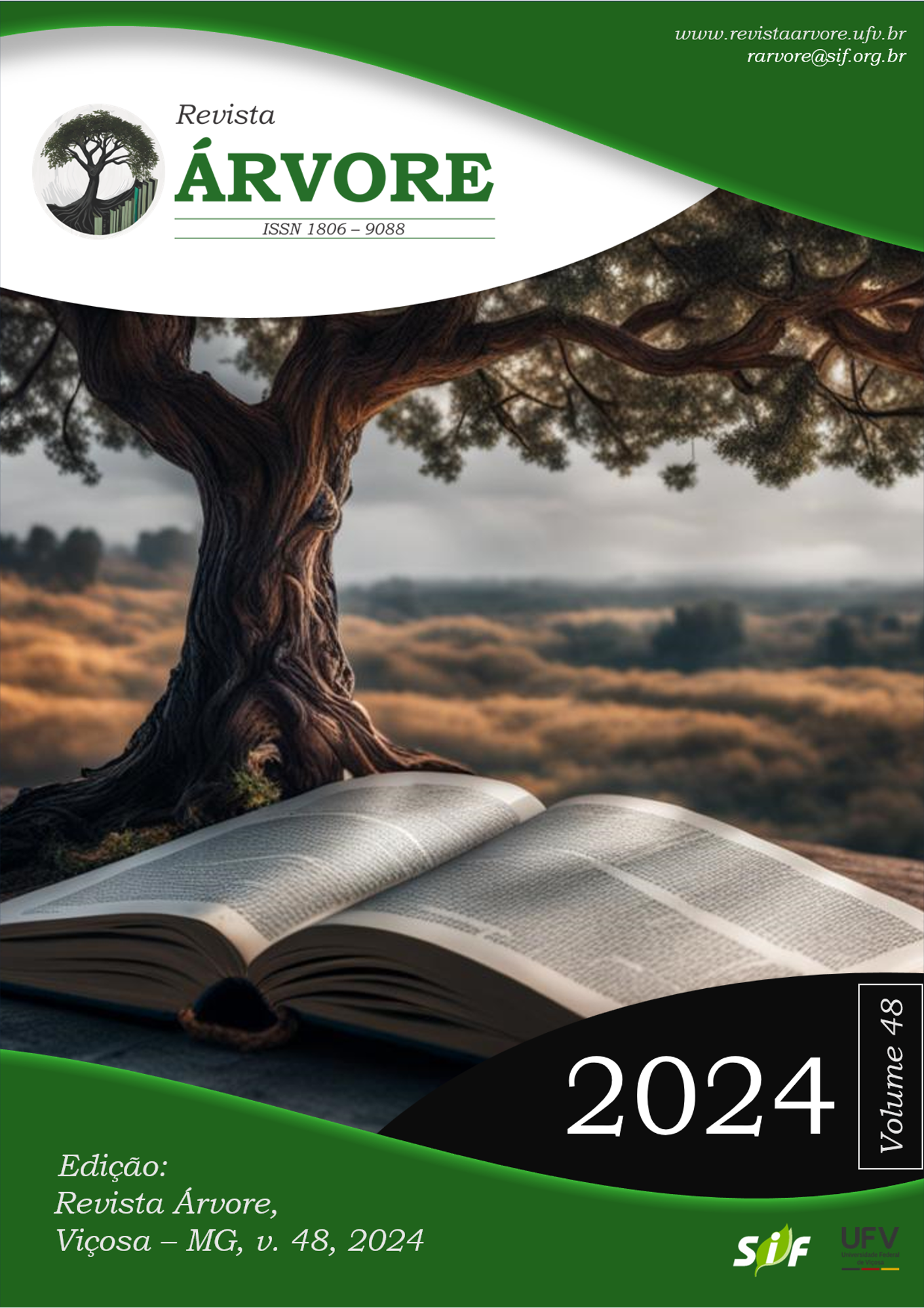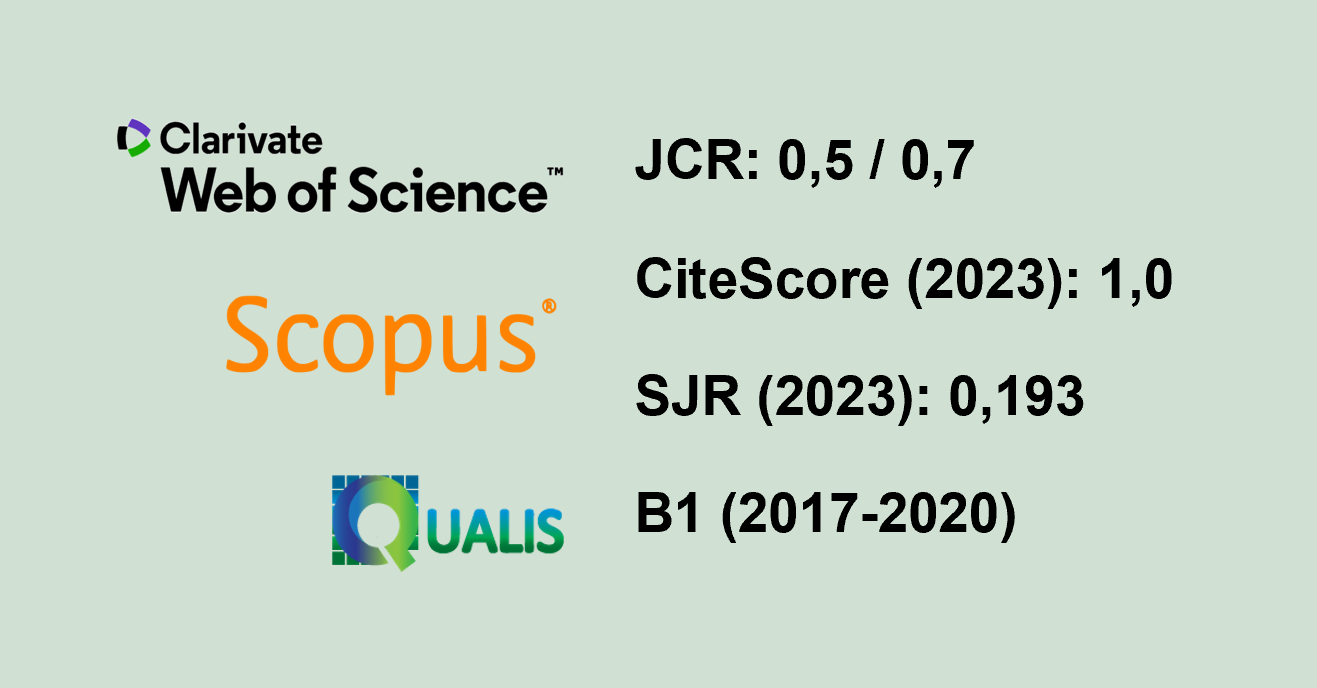Early selection of eucalyptus hybrids tolerant to water deficit, pests, and diseases
DOI:
https://doi.org/10.53661/1806-9088202448263765Keywords:
Water deficit, Drought tolerance, Pest toleranceAbstract
The objective of this study was to perform early selection of the best progenies for traits related to tolerance to water deficit, pests, and diseases in Eucalyptus progeny tests. The experimental trials were set up in a randomized block design, with one plant per plot, and 20 replicates across three distinct locations (Buritizeiro/MG, Bocaiúva/MG, and Inhambupe/BA). At 6 months of age, the tested families were evaluated in terms of mean annual increment (MAI) and tolerance to pests and diseases. The analyses were conducted based on the genetic-statistics procedure of mixed models via REML/BLUP. The selection process was based on the estimated genetic values for the families, associating both traits in analyses using selection indices, namely the Multiplicative Selection Index and the Mulamba and Mock Selection Index, which allowed simultaneous selection for productivity (MAI) and tolerance to biotic agents. In Buritizeiro/MG and Bocaiúva/MG, plant tolerance to the psyllid (Glycaspis brimblecombei) was evaluated, while in Inhambupe/BA, tolerance to eucalyptus rust (Austropuccinia psidii) was assessed. For the trait of tolerance to biotic agents, heritabilities (hg2) were moderate across the three sites, with values of 0.20, 0.26, and 0.24 in Buritizeiro, Bocaiúva, and Inhambupe, respectively. The use of the Multiplicative Index (MI) and Mulamba and Mock Index (MMI) enabled the selection of genetic materials with better performance for both traits simultaneously.
Keywords: Water deficit; Drought tolerance; Pest tolerance
Downloads
Published
How to Cite
Issue
Section
License
Copyright (c) 2024 Revista Árvore

This work is licensed under a Creative Commons Attribution 4.0 International License.
All authors agreed to submit the work to Revista Árvore and granted the exclusive license to publish the article. The authors affirm that it is an original work and has not been previously published elsewhere. The scientific content and opinions expressed in the article are the sole responsibility of the authors and reflect their opinions, not necessarily representing the opinions of the editorial board of Revista Árvore or of the Society of Forest Investigations (SIF).








